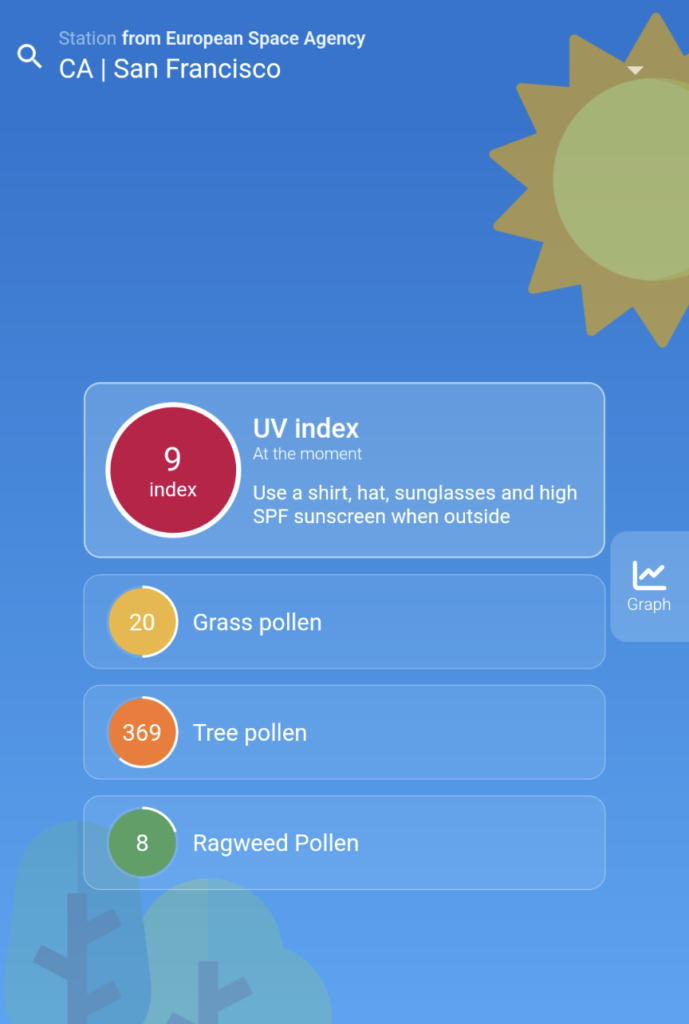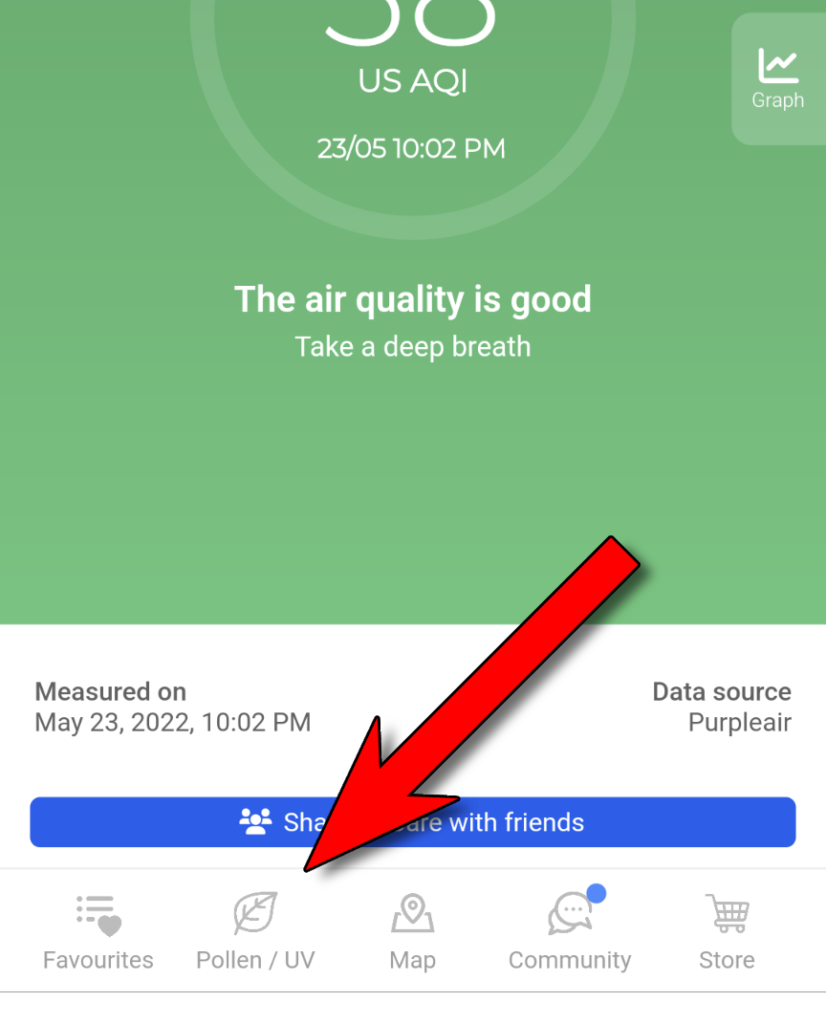AirCare has been on a mission to make environmental hazard information accessible to as many people as possible. And since summer is just around the corner, our team is excited to show you our newly released pollen/UV feature for US users in AirCare!

? Daily pollen forecasts
In the US, aside from pollutants like PM10 and PM2.5, users can now monitor 3 types of pollen: grass, ragweed, and tree pollen.
- ? Grass pollen is the biggest reason you experience hay fever symptoms such as sneezing and a runny nose. Typically, grass pollen affects people from mid-May to July. Types of grasses that are most likely to be the reason for your allergy symptoms include Johnson, Rye, Timothy, Orchard, Redtop, Kentucky Bluegrass, Bermuda, Sweet Vernal, etc.
- ☘️ Ragweed pollen comes from Ragweed, which is an upright plant with fern-like leaves. Ragweed pollen season usually begins at the end of June to September.
- ? Tree pollen emerges at the end of March to mid-May. Trees that are most likely to cause allergy symptoms include Elm, Mulberry, Aspen, Willow, Birch, Beech, Cottonwood, Ash, Cedar, and Oak.
Different geographic regions have different types of pollen, and weather affects it too. The daily pollen forecast feature will be useful for those who want to avoid pollen symptoms and move where the pollen count is low.

☀️ Hourly UV index
Moreover, with the new update, you can also monitor the real-time UV index. Overexposure to UV is a risk for public health. There is a significant potential for damage to the eyes and skin when the UV index Is high.
Typical effects of UV rays include premature aging of the skin and signs of sun damage such as wrinkles, liver spots, leathery skin, and solar elastosis. In addition, UV rays can also cause the cornea to become burned or inflamed.
By monitoring the UV index in AirCare’s latest update, you will know when you need to wear sunglasses and sunscreen!
Where Can You Find the New Feature?
To access the new summer data, all you need to do is click on the “Pollen/UV” button on the bottom bar of the app. To get back to the main pollution screen, just click on the same button.

To enjoy the new feature, just update your app or click here to download AirCare through Apple App Store / Google Play Store.





